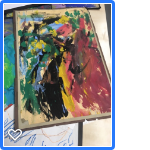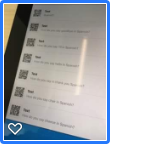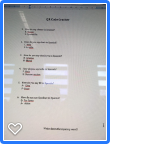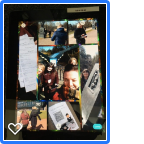October 24, 2018
by User deactivated
Enter your password to view comments.
October 18, 2018
by User deactivated
Enter your password to view comments.
Protected: Inetgrated Arts in Education Week 5 9/10/18
October 15, 2018
by User deactivated
Enter your password to view comments.
Protected: Integrated Arts in Education Week 4 02/10/18
October 9, 2018
by User deactivated
Enter your password to view comments.
Protected: #SD18 Sustainable Development – Climate Change
October 7, 2018
by User deactivated
Enter your password to view comments.
Protected: Integrated Arts in Education – week 3 25/9/18
September 30, 2018
by User deactivated
Enter your password to view comments.
Protected: Integrated Arts in Education Week 2 18/9/18
September 23, 2018
by User deactivated
Enter your password to view comments.
Protected: #SD18 Learning Log – Environment
September 17, 2018
by User deactivated
0 comments
Integrated Arts in Education Week 1, 11/09/2018
Integrated Arts in Education – Week 1
This week saw us being introduced to our Integrated Arts module, where we explored Visual Arts and Music. These are both subjects that I have little experience in and do not feel particularly confident about. Throughout this module I aim to keep an open mind and immerse myself in everything that this module entails to ensure that my confidence grows, and I can pass this on to my future pupils.
In a time where it seems everything is becoming digitalised it can sometimes be hard to remember the joy children gain from being able to create work with paint, paper or musical instruments. It gives them a freedom to express themselves in different ways and use their imagination. Arts in education can be seen a time filler and not enough time is dedicated to this area of the curriculum. It has been noted that there are direct links that involvement in the arts is associated with gains in math, reading, cognitive ability, critical thinking and verbal skills”. (Edutopia, 2009)
In our Visual Arts workshop, we had the opportunity to view art that has been produced by children over the decades. We looked at 3 different developmental stages as identified by Lowenfield & Brittain (1987). The 3 stages that we witnessed work from was the pre-schematic stage (age 4-7), the schematic stage (age 7-9) and the gang stage (age 9-12). The stage that most interested me was the pre-schematic stage. Often drawings/paintings from young children may look no more than scribbles however as stated by McAullife, D (2007) “children have a natural interest in the shape, movement and location of objects and have an innate desire to express emotions and communicate with others through visual representations”. I believe that the paintings I saw were more than a scribble to the child who had produced it. If asked I am sure this child would have been able to tell a story behind their drawing and what each colour or line represented. I also believe that these paintings show complete freedom of the child’s imagination and they are not yet concerned with how others may perceive their art work.

In our Music workshop we explored the benefits of music education. This can extend into other parts of the curriculum and also into other areas of life. As documented by the AEP (2011) music education improves recall and retention of verbal information, advances maths achievement and boosts reading and English language arts skills. Music education can also help sharpen student attentiveness, strengthen perseverance, equip students to be creative and support better study habits and self esteem. It has also been found that music majors are the most likely group of college graduates to be admitted to medical school.
We experienced a music lesson that could be delivered from an early years setting, progressing onto first level. This was a simple lesson where we had to find and keep the beat. This was done initially by clapping our hands to a simple beat through to making the learning more complex by introducing drumsticks and music. This lesson had the whole class engaged and everyone seemed to enjoy it. I also felt that as we weren’t learning in the traditional classroom setting of sitting behind a desk it broke down some of the social barriers that we can sometimes face. This session has re-affirmed to me that although I do not play a musical instrument I will still be able to deliver music education.
REFERENCE LIST
Arts Education Partnership (2011) Music Matters:How Music Education Helps Students Learn, Achieve & Succeed:Washington DC
Edutopia (2009) Why Arts Education is Crucial, and Who’s Doing it Best [Online] Available at: ww.edutopia.org/arts-music-curriculum-child-development [Accessed:17 September 2018]
McAuliffe, D (2007) Teaching Art & Design 3-11 London:Continuum
September 14, 2018
by User deactivated
Enter your password to view comments.
Protected: #SD18 My Urban Environment
April 4, 2018
by User deactivated
0 comments
Digital Technologies, 20 March, QR codes & Outdoor Learning
This week we explored combining outdoor learning with digital technologies. Prior to mobile devices this would have been an impossible task! Outdoor learning has many positive benefits for learning, it can provide “motivating, exciting, different, relevant and easily accessible activities from pre-school years through to college” (Education Scotland, 2010). Many areas of the curriculum can be covered through outdoor learning including health & wellbeing, science and social studies. Outdoor learning brings a practical element to these subjects that the boundaries of the classroom may prevent. “Outdoor learning experiences are often remembered for a lifetime. Integrating learning and outdoor experiences, whether through play in the immediate grounds or adventures further afield, provides relevance and depth to the curriculum in ways that are difficult to achieve indoors” (Education Scotland, 2010). Another advantage to outdoor learning is the way in which relationships can change when the boundaries of the classroom are removed “…the outdoor environment encourages staff and students to see each other in a different light, building positive relationships and improving self-awareness and understanding of others.” (Education Scotland, 2010). As stated by Beauchamp “children are citizens of their localities, making contributions to the communities whether playing sport, interacting with others or simply hanging out with friends…” we can utilise this for outdoor learning as we get suggestions from children about areas in their locality suitable for outdoor learning. This also gives the child a sense of responsibility and involvement.
For our experience of outdoor learning integrated with digital technologies – we went on a treasure hunt! Instead of simply searching for a paper trail of clues or following a map we used QR readers to help us in our search. QR stands for quick response which is a type of two-dimensional bar code.

We mostly encounter these in magazines or other promotional items, where if we scan the code it will lead directly to a website. QR codes can also link to text, an audio recording, a map location or a calendar event. To decipher these codes we simply scan them with a QR reader which can be installed on an IPad with an app. On our treasure hunt, each clue we found had a QR code attached which when scanned would ask a question. From answering the question correctly we found a letter at each station that was an anagram of an associated word. Our questions were all based on Scottish facts with the answer to the anagram being haggis. A benefit of a lesson of this type is that facts are easily remembered. For a child not only will they remember the fun they had with their outdoor learning but they will remember some of the facts they also learned. As an adult learner I had lots of fun with this session and realised how competitive I actually am!
After our outdoors learning, we returned to the classroom to experience for ourselves how easy a lesson of this type would be to create. Although the QR codes look complicated they are relatively easy to create with the use of the app. Working in a group we compiled a quiz based on a Modern Language. The format was similar to the one we had used for our treasure hunt, with the end product being a memorable word in Spanish. The use of QR codes could be used in almost any lesson and is not exclusive to outdoor learning.


Experiences and outcome of Curriculum for Excellence (2004) that could be covered in this lesson are:
I work on my own and with others to understand text using appropriate resources, demonstrating my
understanding by matching written words to pictures and by reconstructing the text in a logical sequence, for example. MLAN 2-08a
Opportunities to carry out different activities and roles in a variety of settings have enabled me to identify my
achievements, skills and areas for development. This will help me to prepare for the next stage in my life and
learning. HWB 2-19a
We also explored the use of PicCollage today. This app is an easy way to take photographs and merge them together to tell a story. Working in pairs we each created our own story. My partner and myself used photographs to show the different transport options to travel to university. We went outside and took photographs of cars and the bus stop. We then searched the internet and used a photograph of the local train station. This app was a good way to get our imaginations working and also by using a mobile device we had the freedom to go out and take whatever photographs we liked. Again I can see the benefits children would receive from having this freedom and creativity.

This week saw us completing the Digital Technologies module. I feel I have learned so much over the last few weeks. I can honestly say that I can see a use for everything I have learned for when I have a class of my own. I have learned that digital technologies can be incorporated into almost any lesson, for any age group and any ability. I realise that it should be used to enhance a lesson and not solely the main focus. Digital technologies can bring so much to education and should not be used as a time filler or reward. As we move further forward in the digital age I will make sure that I have the knowledge of what technology I can use in my teaching practice and how best to apply it. Not only have I learned a vast amount in this module, I have enjoyed every week!
REFERENCE LIST
Beauchamp, G. (2012) ICT in the Primary Classroom: From Pedagogy top Practice. Pearson.
Learning and Teaching Scotland (2010) Curriculum for Excellence Through Outdoor Learning. [Online] Available at: https://education.gov.scot/Documents/cfe-through-outdoor-learning.pdf [Accessed:] 02 April 2018
Pixabay.com. (2018). Free Images – Pixabay. [Online] Available at: https://pixabay.com [Accessed]: 02 April 2018
Scottish Executive (2004) Curriculum for Excellence. Edinburgh: Scottish Executive

